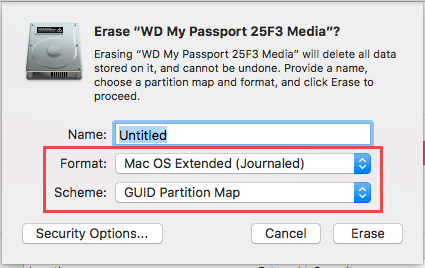Reformatting Required For Mac Os. What Does That Mean
Either way, you’ll need your Mac OS X installation DVD that came with your Apple system, as you’ll be booting your computer from this disk to reformat your internal drive. Since these file systems are key to the operating system making sense of the data, an OS cannot read data off of a disk without support for the file system with which the disk is formatted. When you format a disk, the file system you choose essentially governs which devices can read or write to the disk. If it’s formatted for Mac OS X, then the last item will be the serial number of the iPod. If it’s Windows-ready, then after the serial number will be “Format: Windows”. Simple enough, if a bit obscure. Often, the best option to fix these problems would be to reformat your computer and reinstall your OS, but since most of us don't plan on ever taking this drastic measure, we don't obtain a recovery disc or thumb drive.
So you’re when you’re presented with a choice of potential file systems. The list is longer than you’d think, with terms like “APFS (Case-sensitive)” and “Mac OS Extended (Journaled, Encrypted)” to choose from.
What does all this mean, and which should you choose? Basically there are three main options: RELATED: • APFS, or “Apple File System,” is one of the.
Mac Os. 10.11
It’s optimized for solid state drives (SSDs) and other all-flash storage devices, though it will also work on mechanical and hybrid drives. • Mac OS Extended, also known as HFS Plus or HFS+, is the file system used on all Macs from 1998 until now.
On macOS High Sierra, it’s used on all mechanical and hybrid drives, and older versions of macOS used it by default for all drives. • ExFAT is the best cross platform option, designed to work on Windows and macOS systems. Choosing a file system is basically choosing between these three options. The other factors, like encryption and case sensitivity, aren’t something you should get too hung up on.
Let’s dive into a bit more details about the top three choices below, and then explain a few of the sub-options. APFS: Best for Solid State and Flash Drives APFS, or Apple File System, is the default file system for solid state drives and flash memory in 2017’s macOS High Sierra. First released in 2016, it offers all sorts of benefits over Mac OS Extended, the previous default. RELATED: For one thing, APFS is faster: copying and pasting a folder is basically instantaneous, because the file system basically points to the same data twice. And improvements to metadata mean it’s very quick to do things like determine how much space a folder is taking up on your drive. There are also a number of reliability improvements, making things like corrupted files a lot less common.
There are a lot of upsides here. We’re just skimming the surface, so check out our article about for more information about the benefits of APFS. So what’s the catch?
Mac Os. Snow Leopard
Reverse compatibility. 2016’s macOS Sierra was the first operating system capable of reading and writing to APFS systems, meaning any Mac using an older operating system will not be able to write to APFS-formatted drives. If there’s an older Mac you need a drive to work with, APFS is a bad choice for that drive. And forget about reading an APFS drive from Windows: there aren’t even third-party tools out there for that yet. APFS also isn’t compatible with Time Machine at this time, so you’ll have to format backup drives as Mac OS Extended. Other than that, there’s probably no reason not to use APFS at this point, especially on solid state drives and flash memory. Mac OS Extended: Best for Mechanical Drives, Or Drives Used With Older macOS Versions Mac OS Extended was the default file system used by every Mac from 1998 until 2017, when APFS replaced it.
Reformatting Required For Mac Os. What Does That Mean

To this day, it remains the default file system for mechanical and hybrid hard drives, both while installing macOS and while formatting external drives. This is in part because the benefits of APFS aren’t as clear on mechanical drives. If you’ve got a mechanical hard drive, and you intend to use it only with Macs, it’s probably best to stick with Mac OS Extended. And any drive that needs to work with older Macs, running El Capitan or earlier, should absolutely be formatted with Mac OS Extended, because APFS is not compatible with those computers. APFS also doesn’t work with Time Machine, so you should format any drive you want to use for backing up your Mac using Mac OS Extended.
Viewer FAQs Livestream Platform Producer for Desktop Livestream Broadcaster Livestream Studio. Promoted articles. How Do I Watch an Event on Livestream? How Do I Simulcast My Events to Facebook Live or YouTube? Finding the RTMP URL and Stream Key for My Event. What’s new for Livestream at NAB 2018? Studio software improvements, a brand new hardware product, and our first time in the Vimeo booth! NAB (the National Association of Broadcasters) is the world’s leading broadcast and media technology tradeshow. Convening every year in Las Vegas, NAB begins April 9 with exciting new products and releases for the video broadcast industry. Livestream studio update. Studio 5 Live Production Switcher Software. Transform your computer into a professional live production control room with Livestream Studio. Input multiple feeds, add graphics, master audio, and stream in one robust, easy-to-use package.